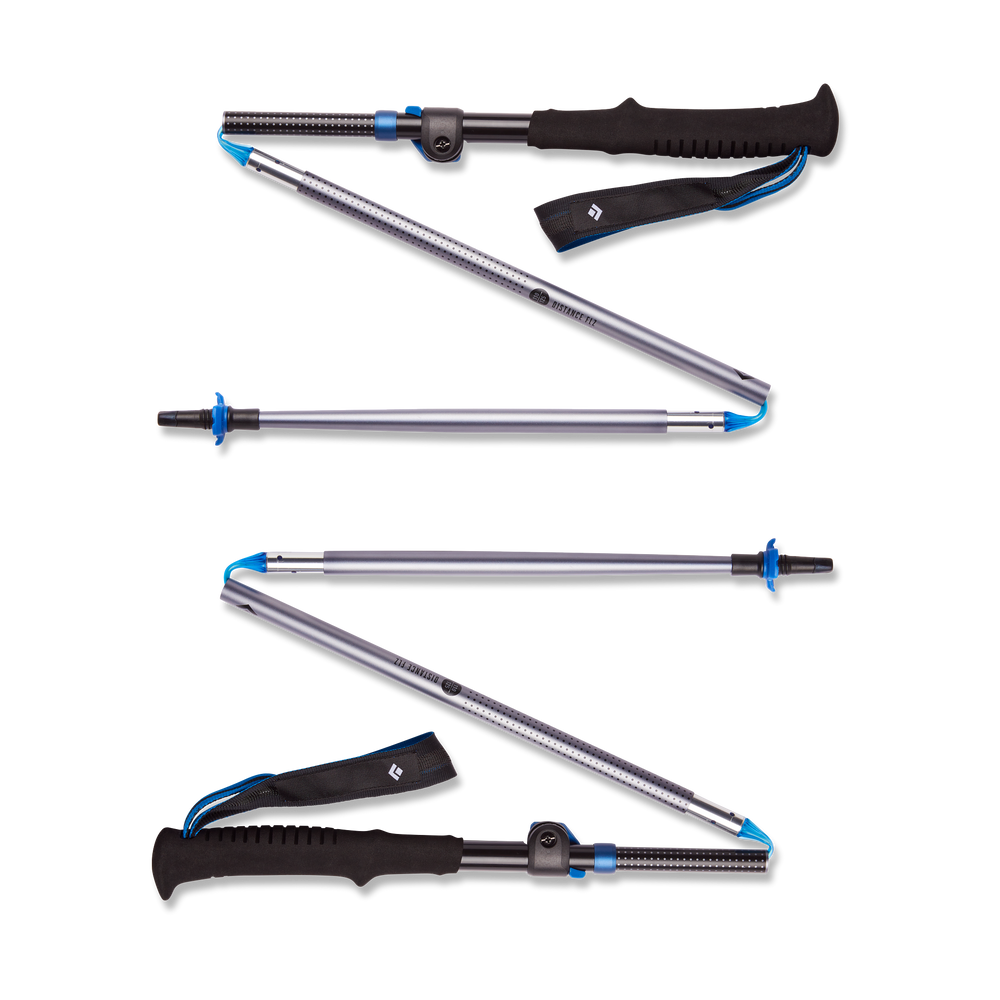A Smarter Way to Hike…

If I had a dollar for every mile I’ve walked with my Black Diamond trekking poles, I’d be a rich man. They have been a constant companion for me on countless trips to Italy, Patagonia, Mont Blanc, and any other hilly destinations where I’ve taken my travel groups.
Ten years ago you rarely saw Americans using trekking poles (often called walking sticks), they were mostly a European thing. Americans tended to look on trekking poles as the “crutch ” or “cane” of the outdoor world, a necessary evil for those too elderly or infirm to walk without them. Spend some time hiking in the Alps and you’ll quickly lose that notion. You’ll see plenty of Swiss, Italian, Germans and Austrians of all ages using trekking poles. Many a time I’ve seen world-class mountain guides in their twenties with a pair of trekking poles, using them to great advantage to move amazingly quickly across the terrain. They look on trekking poles as another piece of technical gear, just like good boots or a great outdoor jacket. I could fill a book with the names of customers who were very skeptical on Day One of their tour, but by Day Three you’d have to pry open their hands if you wanted to borrow them.
And why, do you ask, are they so great? To paraphrase George Orwell…”Two legs good, Four legs better!” Let’s break it down…
I don’t think that poles do much for you on flat ground, it’s the uphill and downhill sections where they really prove their worth. Having poles to lean on, it’s like having a sort of moving handrail to stabilize you, much like a handrail on a stairway. Think about a typical stairway, now imagine that instead of nice, even stairs you had a downhill slope with an uneven surface, loose gravel, stones, etc. Imagine how that uneven footing would make you really appreciate the handrail. Imagine the difficulty negotiating that boulder-strewn stairway without that handrail. THAT’S how the poles work! Having four “legs” will help you avoid slips and falls as you work your way across sketchy terrain. When the ground is slick from rain or snow, they’re amazingly helpful…a LOT less chance of turning an ankle, and a LOT less chance of falling on your bum.
In addition, when having two more points of contact with the ground you’ll be able to transfer some of the exertion from your legs to your upper body. This means less fatigue as the day wears on, and more energy to party in the evening. For many of us approaching middle age, (or maybe well into it…or maybe well PAST it), one of the most important advantages is that trekking poles remove much of the stress and impact shock that your knees have to deal with. This means less wear-and-tear on your knees, and over the course of a long day the cumulative effect over thousands of steps is amazing. Over the course of a lifetime of hiking this benefit can be dramatic. In the years to come your Old Self will thank your Young Self for contributing to that 401K and for using trekking poles to keep your knees from wearing out!
As far as the poles themselves, my current favorite brand is Black Diamond. I’ve been using them for over two decades, and have found them to be sturdy and dependable. Black Diamond makes about a dozen models, but I’ll zero in on the Distance FLZ, the one that I think fits the bill for most of the travelers on our tours. Oh, and keep in mind that you’ll need two poles…one just doesn’t cut it.
The Distance FLZ trekking poles have a three-section foldable shaft, which breaks down in just a few seconds into a VERY compact package, which allows them to easily be fit into any backpack without sticking out of the top or sides. With just a few minutes of practice, you can use the patented Flicklocks to pop the pole back into shape. It has a durable aluminum construction which I feel is the best balance between strength and light weight. The EVA foam grip is super-comfortable and non-slip. Some people prefer the cork-style grips for the same reason, but I’ve always been a fan of the EVA foam rubber, which I prefer. I think the softer grips slip less when your hand gets sweaty. I definitely do not like the hard rubber grips on any brand, I find it uncomfortable and slippery.
The Distance FLZ comes in three lengths, so be sure to size them properly based on your height.
You might also look at the Black Diamond Distance FLZ Carbon. For the hiker who has everything! It has all the features of the regular Distance, but has 100% carbon fiber shafts for ultra-light weight. It’s the Ferrari of trekking poles.
Keep in mind that there is a short learning curve when first using trekking poles. The first thirty minutes might feel somewhat awkward, but eventually you’ll fall into the rhythm of it and fall in love with them. There is definitely a technique to be learned, so a bit of instruction from someone who is proficient would certainly help.
See you on the trail!

